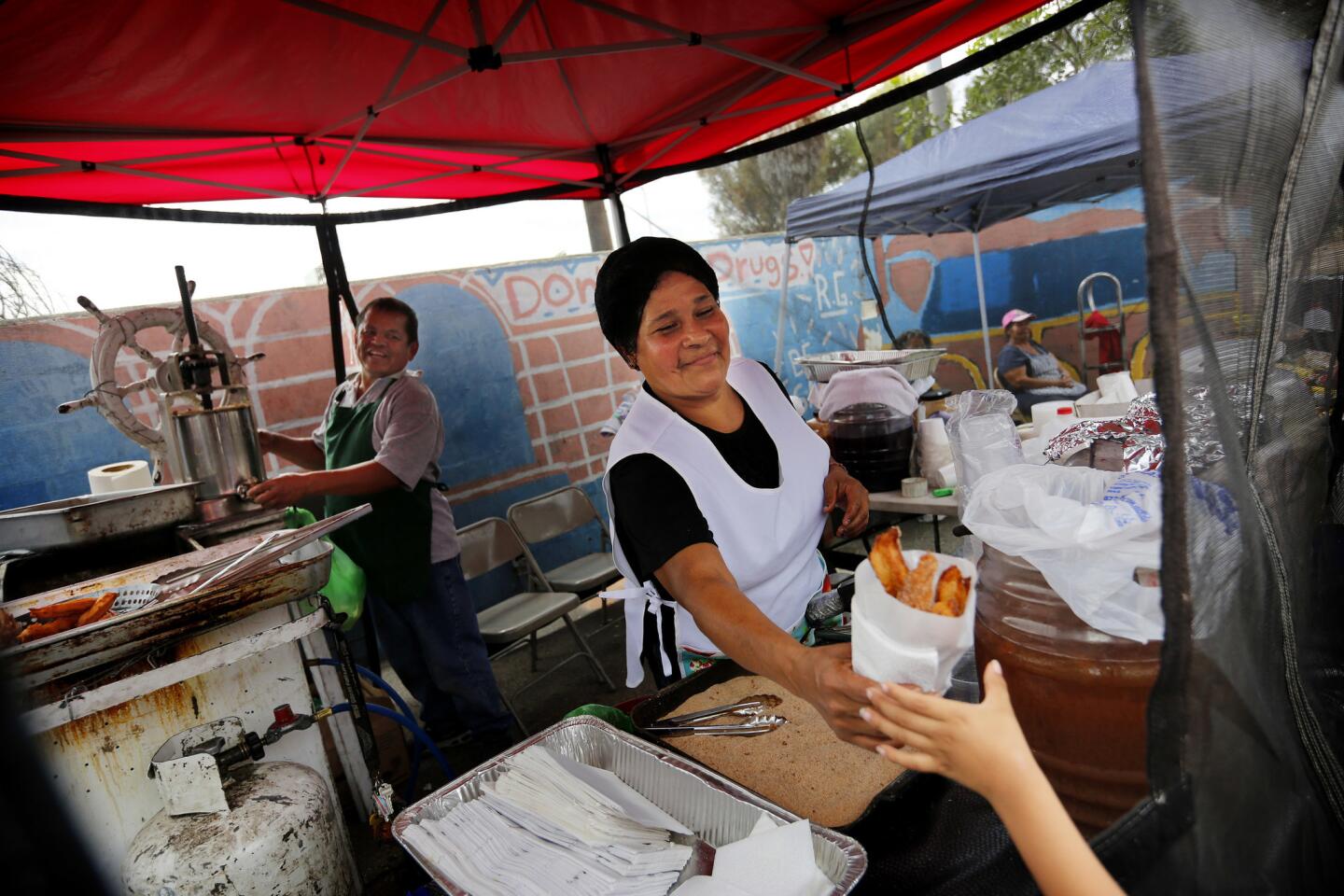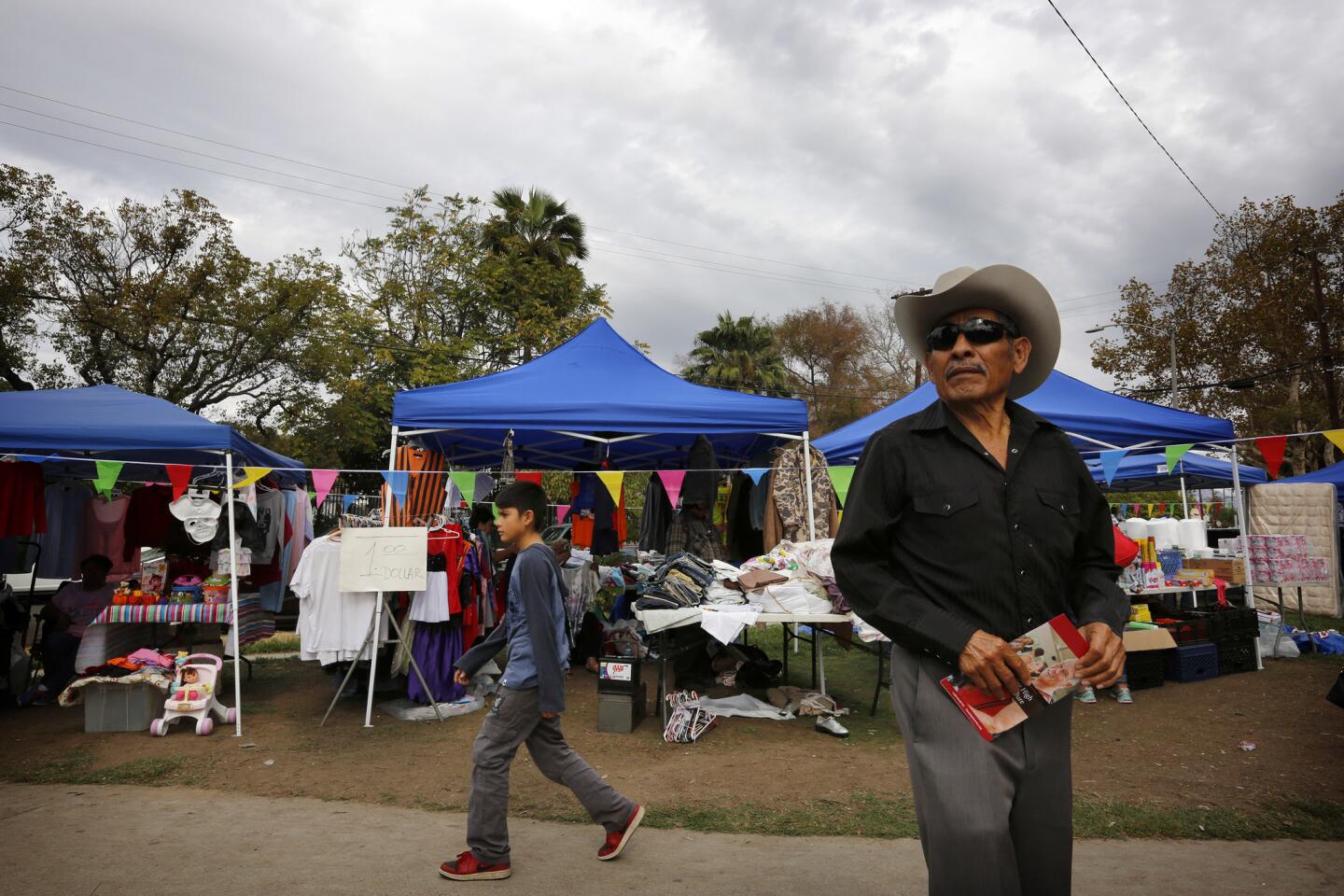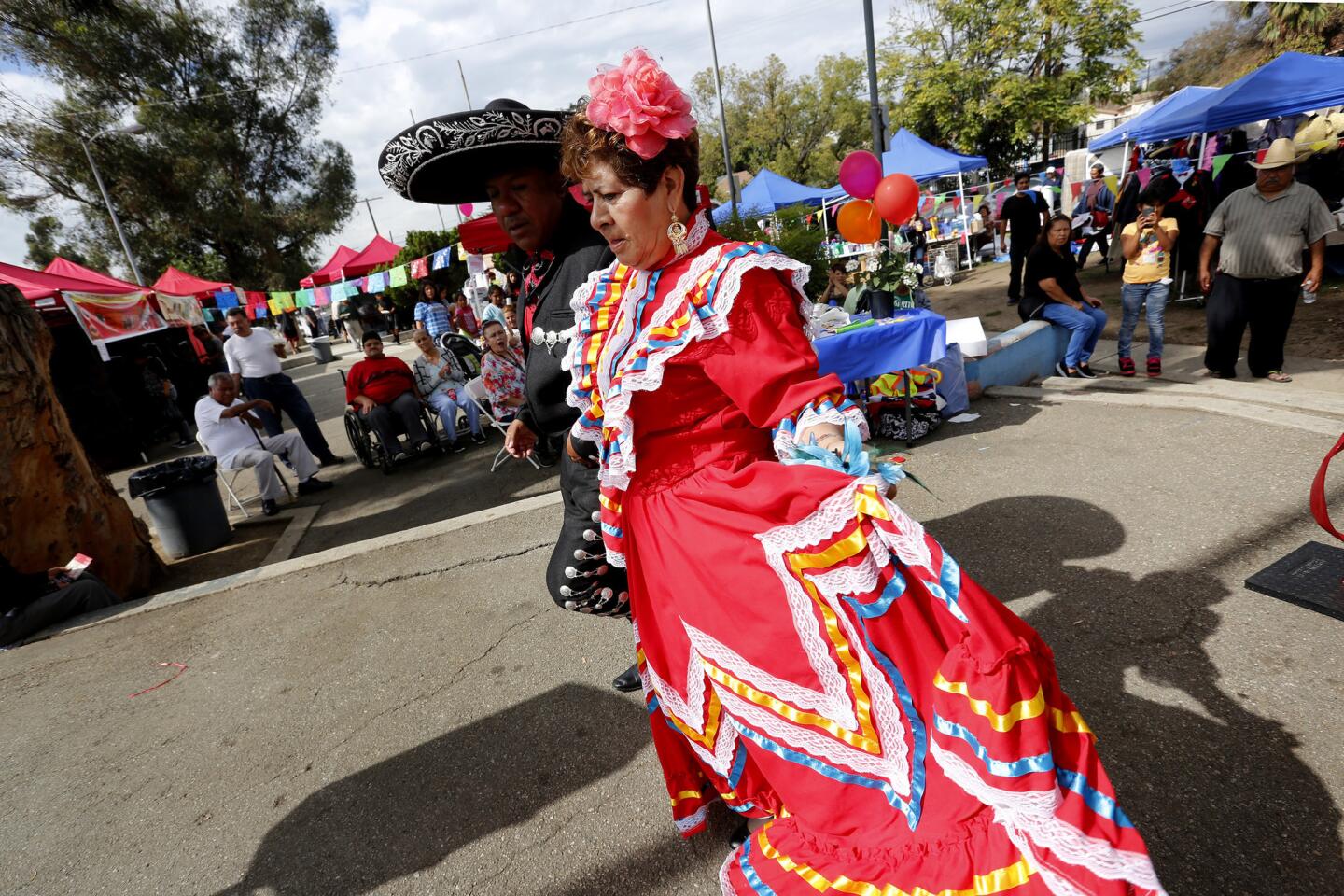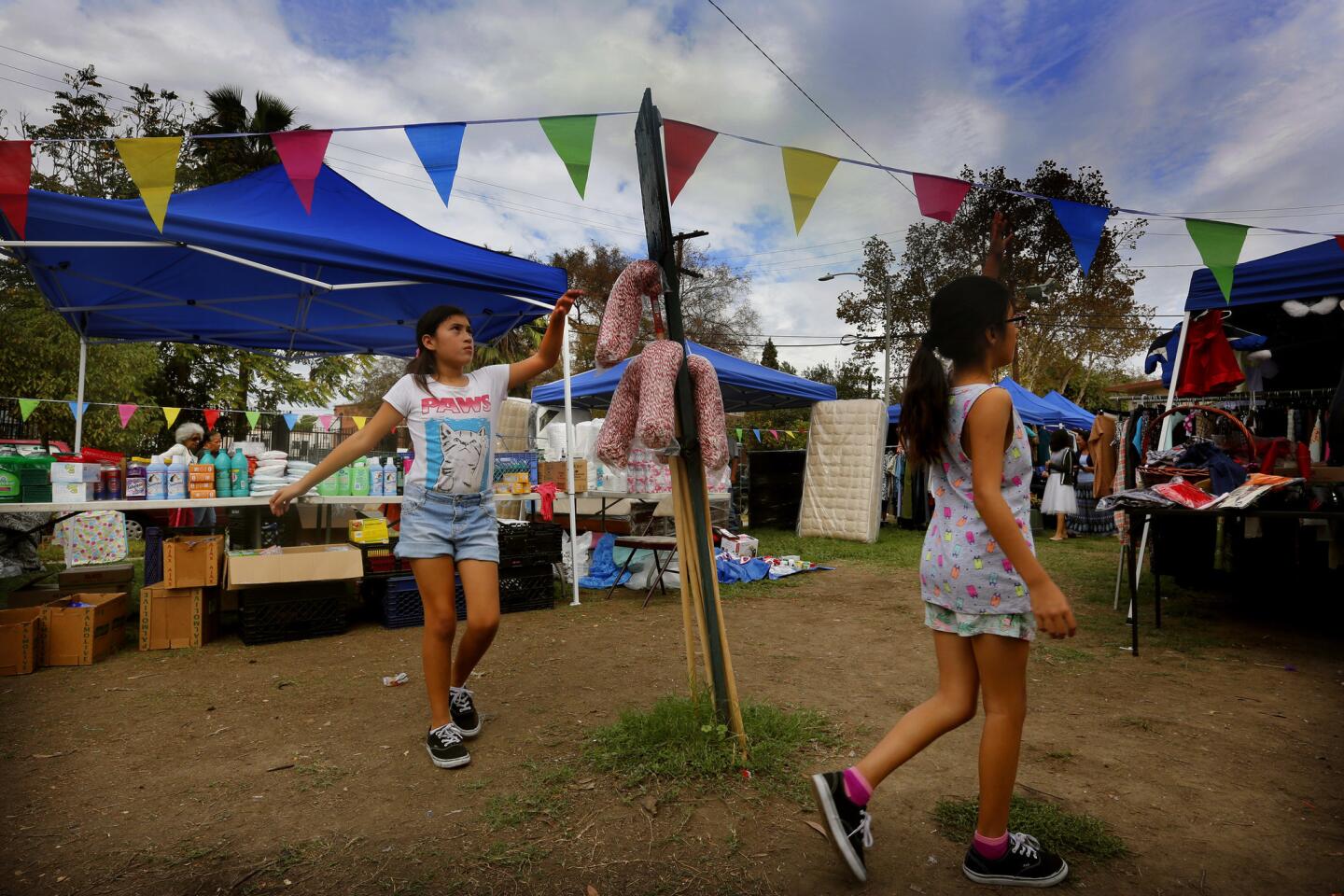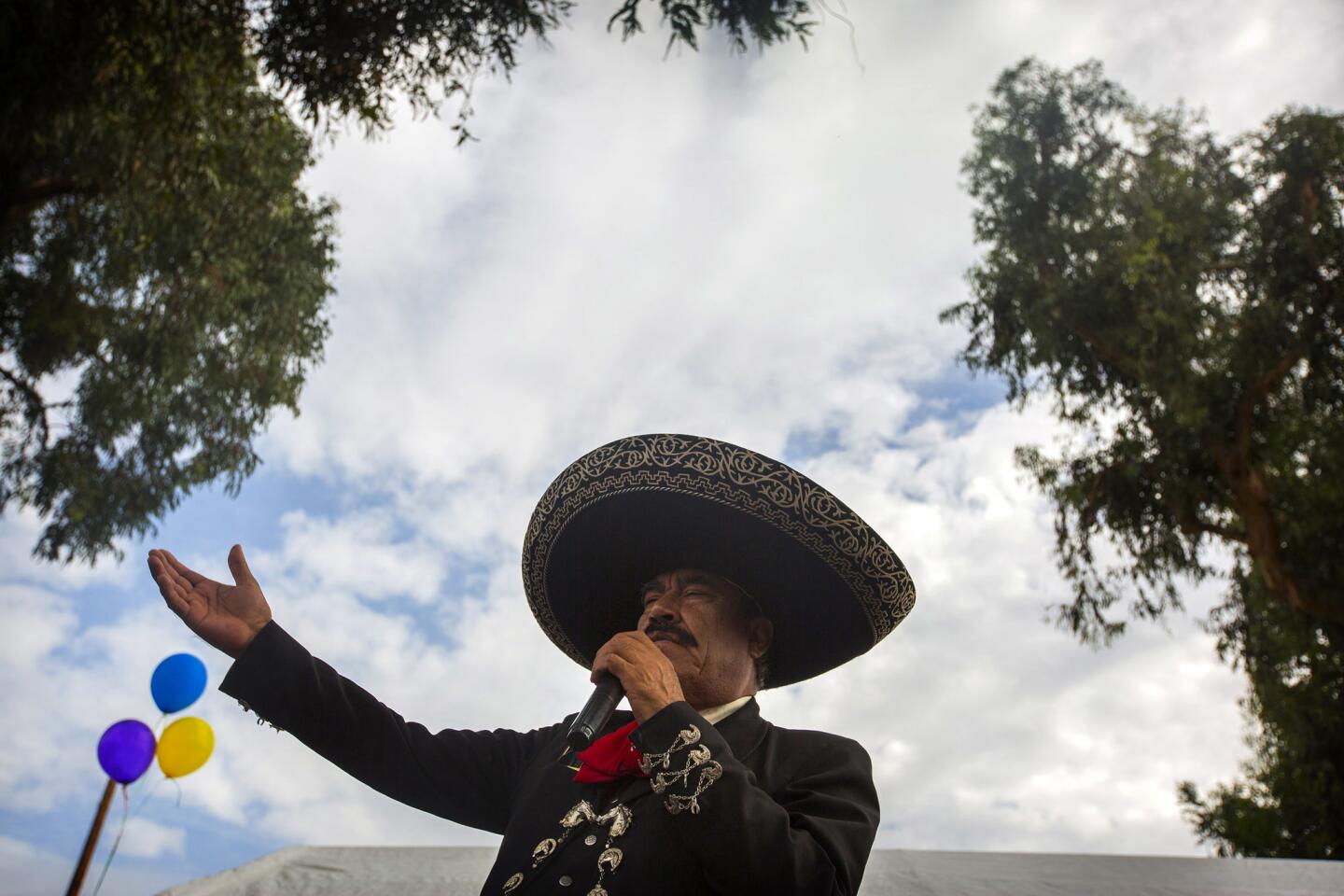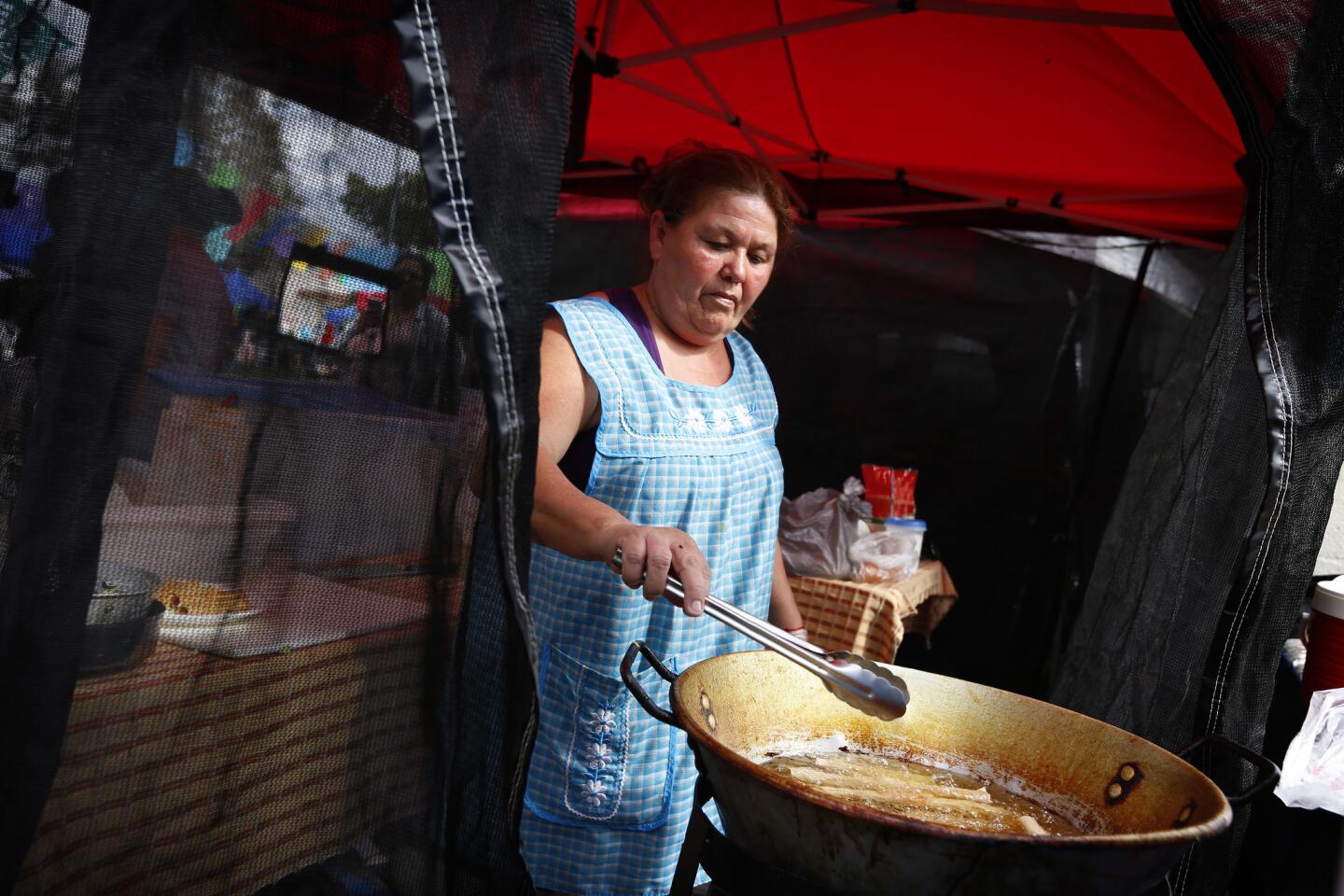Ramona Gardens becomes first public housing project with an open-air market
The cluster of blue tents selling shirts, garden tools, knickknacks and tacos fresh and hot enough to burn the roof of your mouth might not seem like much from the outside, but in this East L.A. neighborhood, the Ramona Gardens Swap Meet is a marker of change.
For years, the collection of vendors and food stands dotting Ramona Gardens Park on Saturday mornings formed a necessary, albeit illegal, pop-up market for a low-income neighborhood far from any large grocery stores. Tired of the endless citations, the vendors agreed to temporarily close up shop in January, and worked alongside Los Angeles police, the housing authority and local activist groups to bring their weekend tradition in line with city codes.
The result? The first legal open-air market at a Los Angeles housing project, and a model that some people hope can be replicated across the city.
âThis is a great example of creating the kind of partnerships in communities where people can build the community they need, and have the community they want,â said the Rev. Zach Hoover, executive director of LA Voice, an interfaith congregation at the heart of the effort to make the weekend swap meet legal.
A few hundred people descended on the Ramona Gardens housing project Saturday morning to celebrate the swap meetâs first weekend as a legal operation, sipping on agua frescas and perusing the vendors hawking landscaping tools, home goods or low-cost clothing as a mariachi band played in the background.
To some, like LAPD Sgt. Kenneth Edwards, the revitalized market is a sign of much-needed progress in a neighborhood long associated with gang violence. For decades, the apartment complex was considered an enclave for the Big Hazard gang, an outfit with connections to the Mexican Mafia whose power has withered in the face of repeated law enforcement crackdowns.
Edwards has been part of a unit focused on aiding Ramona Gardens, the Hollenbeck Divisionâs âCommunity Safety Partnership,â for five years, and he knows that progress requires patience. But even small victories are important ones, he said, and establishing neighborhood institutions like the swap meet could be crucial to keeping younger residents from repeating the mistakes of decades past.
âWeâre not declaring complete victory. But thereâs generational healing that needs to happen here,â Edwards said. âA lot of our interactions with some of the gang members who have turned their ways, theyâre saying if we would have had this kind of interaction with the LAPD, this kind of community leadership, maybe we wouldnât have been involved.â
Gang violence has plummeted in East L.A. since its height in the 1990s, though violent crime has ticked back up in recent years. Los Angeles police have also been involved in five on-duty shootings in the Eastside district this year, stoking tensions between locals and police in some corners.
Even the Big Hazard gang, which was seemingly crippled by a 2014 federal takedown at the apartment complex dubbed Operation Resident Evil, still lurks in the area. A gang tag with the letters âBHâ scrawled in long black lines marked a wall just 50 feet from the swap meet Saturday afternoon.
But none of that history seemed able to pierce the happy vibe inside the swap meet, where community leaders and vendors were celebrating the end of a years-long journey.
A number of the vendors who frequent Ramona Gardens Park sat down with Hoover and other community partners at Santa Teresita church five years ago to begin strategizing how to bring their pop-up marketplace in line with Los Angelesâ regulations.
At the time, most of the vendors had never considered the need for sinks or mesh netting to keep their mini-eateries up to city health codes. Working alongside the LAPD, the housing department and other groups, Hoover said a $25,000 grant was obtained, in part, to help the vendors buy needed supplies. Now, with the vendors trained in how to properly maintain their businesses and keep them in compliance with city codes, the swap meet should be able to thrive.
âPeople can make a piece of their living without worrying if their stuff will be taken away the next day,â Hoover said.
Edwards knows firsthand how important the swap meet is for the neighborhood. His mother, a Mexican immigrant, used to travel from Downey on weekends to sell wares at the swap meet when it first popped up in the 1990s.
Nestled against the 10 Freeway, the apartment complex is situated unreasonably far away from grocery stores and other outlets, especially in a community where many residents canât afford a car. For some vendors, Edwards said, the swap meet might mark their only weekly income.
âThe people that are here are poor and thereâs not a lot of choices for markets,â he said. âSo obviously they came here and they wanted to sell.â
Standing near a vendor selling shirts priced at $1 and novelty childrenâs Halloween costumes, Boyle Heights native Christopher Barragan said he hoped that the reemergence of the swap meet could help create a dialogue among the different generations of Latinos who live in the area.
âPeople come here every week, they communicate. Itâs something you can look forward to,â he said. âFor Mexicans, itâs a tradition.â
Follow @JamesQueallyLAT for crime and police news in Southern California.
ALSO
Does car-crazy Los Angeles have a few things it can teach the smug S.F. Bay Area about mass transit?
Search-and-rescue workers find body of missing hiker
Cold, wet storm to bring rain, hail, snow to Bay Area and Northern California
More to Read
Sign up for Essential California
The most important California stories and recommendations in your inbox every morning.
You may occasionally receive promotional content from the Los Angeles Times.
